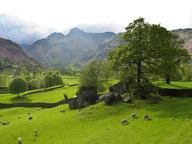Quiz Answer Key and Fun Facts
1. The Borough of Rossendale is situated in which English county?
2. See a valley and youīll soon find a river. Which one flows through the Rossendale Valley?
3. During the Industrial Revolution, what was Rossendaleīs main source of employment?
4. Let the train take the strain for a while, departing from Rawtenstall. Which line will we be travelling on?
5. Back in Rawtenstall, letīs head for the town whose name means "Valley of the Hazels". Where are we off to?
6. Lancashire winters, like those in the Scottish Highlands, for instance, can be harsh. Although itīs worth taking skis to the Highlands, could we use them in Rossendale?
7. Dominating the skyline above Ramsbottom, and clearly visible from the M66 motorway, is Peel Tower, a monument to Sir Robert Peel. For what is he best remembered?
8. Wandering around Bacup, a sign tells us we are on Elgin Street. What claim can this street make?
9. Time to "get summet darn uz necks", as the consumption of food and drink is known locally. Black Pudding sounds nice, but what is it?
10. I think we deserve a quiet drink to round off the quiz. So letīs call in at Fitzpatrickīs, Rawtenstall. Sounds good so far, but why might we be disappointed?
Source: Author
simjazzbeer
This quiz was reviewed by FunTrivia editor
minch before going online.
Any errors found in FunTrivia content are routinely corrected through our feedback system.


